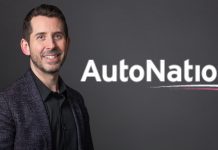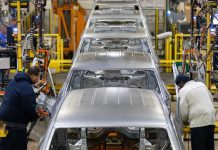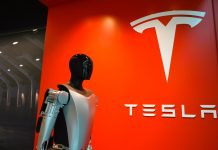The traditional dealership sales model has endured for decades, but the past year has forced the auto retail industry to adapt. While digital retailing existed prior to the pandemic, it’s no surprise that it’s been accelerated as a result. As with other economic and industry challenges in history, dealers and OEMs are rising to the challenge and reimagining the sales process.
What that looks like is different among the OEMs and largely hinges on dealership engagement. However, an omnichannel commerce process that allows customers to transition between online and in-person interactions seamlessly, whether they start on the OEM site or the dealership, is a focus. It’s one that the Roadster Express Storefront addresses.
Roadster’s Andy Moss and Amit Chandarana weighed in on the digital retailing process with CBT News.
Where is digital retail headed?
Amit Chandarana, Senior Vice President at Roadster, said, “We knew at some point OEMs were going to migrate their focus and attention toward digital retailing like they did with website providers in the early 2000s. Dealers were buying that software because they knew they needed to modernize. Dealers are always going to be first with this stuff but then the OEMs realized they need to regulate it from the brand compliance standpoint, data standpoint, and efficacy standpoint. Essentially that’s what’s been happening with digital retailing over the past two or three years.
“The fundamental shift that’s happening right now is why the OEMs are getting more involved in digital retailing right now. If you think about a car company, they’re usually focused on three things: making cars, distributing cars, and marketing them… OEMs are progressing more towards the connected vehicle so that it is more like the Tesla experience.”
Chandarana remarked, “If you think about what we do from a digital retail standpoint is we’ve literally digitized the sales process. By digitizing the sales process, we’ve now given datapoints and breakpoints on where the customer is throughout the entire journey. It’s no longer a linear journey – it’s a fragmented, scattered graph now. With the permission of dealers, we can now share that information back and forth with OEMs and the dealer network, and that allows everyone to work harmoniously on a more efficient basis.”
The current digital retailing adoption rate among dealers
COVID-19 has obviously played a factor in digital retail adoption, as it has with so many aspects of dealership operations in the past year. Amit says, “The progression is going from wanting it to needing it, and now, “Am I using this thing the right way?”. From the statistical standpoint, we’ve seen it’s about 40-50% saturation.”
He mentions that it all varies depending on what dealers are considering digital retailing – on a spectrum from payment calculator only to a complete end-to-end omnichannel retailing solution. “If you measure penetration on omnichannel commerce, it’s much lower. You’re probably looking at 25 to 30% that are actually doing it that way.” With so many dealerships affected by restrictions during the pandemic, it could be surprising to discover that digital retailing as an omnichannel end-to-end commerce solution hasn’t become more integral.
Will dealers be able to survive in the future without digital retailing?
In the future, will the traditional sales model allow dealers to thrive? According to Amit, it’s unlikely they’ll see the same success as more progressive dealers with digital retailing solutions. He says, “At some point, they’re going to need some sort of commerce platform. There aren’t too many things in the world that people don’t use ecommerce for. Ultimately, the automotive industry is going to follow suit.
“Dealerships can hold out for as long as they want but ultimately they’re going to have to allow customers to conduct commerce in the way that they want to. Five to ten years from now, they probably aren’t going to be able to survive.
How have OEMs and dealers been working together?
Andy Moss, CEO of Roadster believes that the right software, implemented by OEMs and their dealers, will make the customer’s sales journey better. “Another area we’re seeing the industry changing pretty rapidly is how do the OEMs and the dealers work much more closely together from the customer journey perspective. If you think about how the traditional model works, we’re basically living in a lead economy for buying cars. Traditionally you went to the dealership website, you saw a few listings, you filled out a lead form… and they started calling. OEMs are no different. How can you bring some of the retailer transactional capabilities and the ecommerce piece of it and start the customer journey from the OEM site?”
Andy continues, “Think about it as a consumer. If I go to one of those OEM sites and find a car that I want, I don’t want to have to wait for the dealer to call me. I just want to start buying it. The key to that is the OEMs don’t have retail pricing. There’s a lot of complexity that happens at the retail level and point of sale. How do you make it one seamless experience? We’ve been using technology to smooth that out.
“That’s where we see the OEMs going deep in the next few years.”
It’s a sentiment that Jared Dowdy, Hyundai Motor America’s Senior Manager of Retail Process and Sales Training echoes. Hyundai is one of the OEMs that has been using Roadster’s Express Storefront.
”Ultimately, it is an end-to-end solution that takes the customer in and out of the purchase funnel when they choose, however many times they want. The point there is that it’s seamless and the same things they’re seeing online, they’re seeing instore if they visit a store. So, that’s ultimately what we’re trying to accomplish is that seamless customer experience…
“Currently, our Roadster partner is swiftly approaching the number one spot. A lot of that has to do with the tool itself. The [Roadster] business model, their innovation instead of just standing still, they continue to innovate and find new ways to tweak their tool, to make it a better customer experience, and provide new offerings for the customer.”
Did you enjoy this article from Jason Unrau? Read other articles on CBT News here. Please share your thoughts, comments, or questions regarding this topic at newsroom@cbtnews.com.
Be sure to follow us on Facebook and Twitter to stay up to date or catch-up on all of our podcasts on demand.

While you’re here, don’t forget to subscribe to our email newsletter for all the latest auto industry news from CBT News.








